The October skies above Rich Square, North Carolina, were cloudless, but on Donny Lassiter’s farm, rain poured down.
Eight team members from Ralph Lauren and the Ralph Lauren Corporate Foundation had gathered there to learn how their support of the Soil Health Institute’s U.S. Regenerative Cotton Fund (USRCF) boosts cotton growers’ profitability while eliminating one million metric tons of carbon dioxide equivalent from the atmosphere by 2026.
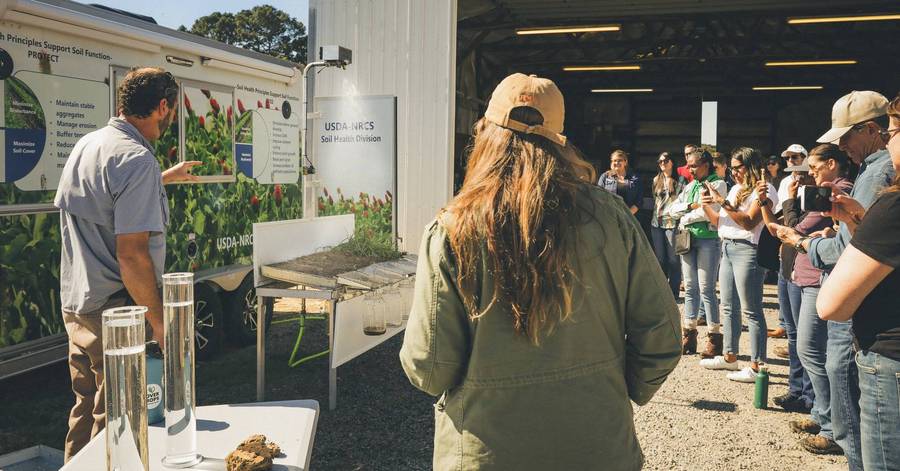
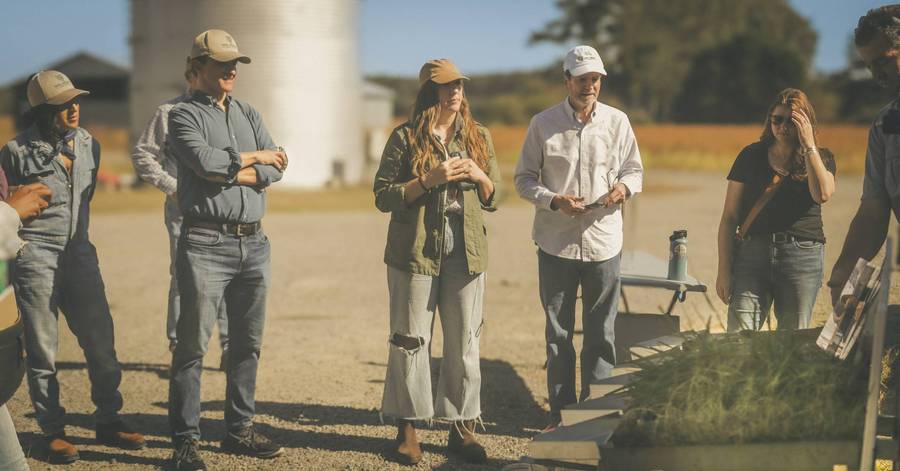
The downpour came from a rainfall simulator that showered five different soil samples, some bare, some protected by the leaves and roots of living plants. As the group watched, dark brown runoff poured off the bare samples, taking valuable soil and nutrients with it. The samples protected by plants, however, absorbed the rainfall, showing how living roots, soil cover, and minimal soil disturbance can help store water for crops, mitigate drought and flooding, and reduce erosion.
The demonstration was part of a three-day, hands-on immersion in regenerative agriculture for the team from Ralph Lauren and the Ralph Lauren Corporate Foundation, USRCF’s founding supporter. Launched in 2021 to empower farmers and their trusted advisors with the tools, information, and networks to successfully adopt soil health management systems, USRCF works in Texas, Arkansas, Mississippi, Georgia, North Carolina, South Carolina, Alabama, Missouri, Oklahoma, and California – states representing approximately 85% of U.S. cotton production.
During the visit, the Ralph Lauren team met with farmers, learned more about cotton growing and processing, and explored connections between soil health, environmental outcomes, and human health.
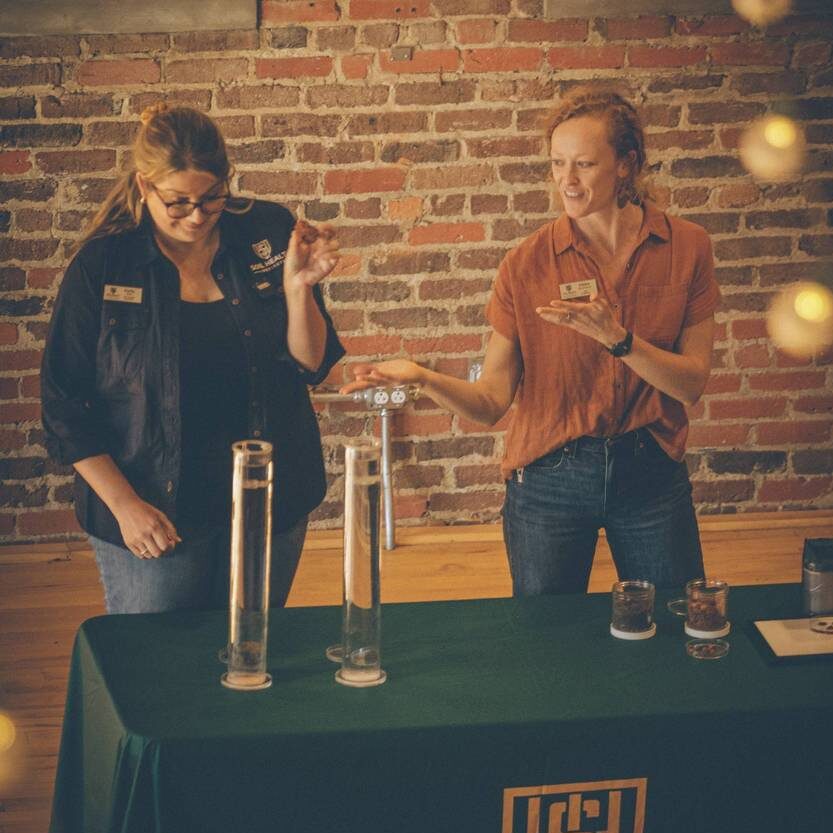
After the rainfall simulation, the group heard from Lassiter, who serves as a USRCF Farmer Mentor, offering locally relevant experience to growers in his area.
Lassiter, a third-generation farmer, described the opportunities and challenges of practices including reduced tillage and cover crops, reflecting on how these practices honor the ethos instilled by his grandfather.
“Granddad didn’t call it soil health – he called it looking after the land. You leave it better than you found it,” he said.
Lassiter’s granddad carried a bucket of wheat kernels with him as he harvested peanuts, tossing handfuls into the rows to serve as a cover crop. The younger Lassiter does things differently: As he took questions from the group, a plane flew low over the neighboring field, seeding a cover crop. Instead of tilling the soil for weed control, he’s gone no-till on his cotton fields. His farm was among the first in the area to incorporate soil health management systems, but he’s seeing more growers in the region turning to regenerative practices.
It’s paying off.
Dr. Wayne Honeycutt, SHI’s President and CEO, walked the group through the findings of SHI’s recent partial budget analysis of soil health management systems on five North Carolina cotton farms. The interviewed farmers, all long-term adopters of these systems, saved an average of $65 per acre and increased net income by $149 per acre by implementing these systems. Every farmer interviewed also reported increased crop resilience, better access to their fields, and improved water quality, among other benefits.
While half of North Carolina cotton farmers have switched to no-till, just 11% use cover crops. With support from Walmart Foundation, The VF Foundation, Levi Strauss & Co., Hearst Foundations, and Cotton Incorporated reinforcing the Ralph Lauren Corporate Foundation’s founding grant, USRCF is working to expand regenerative practices in the area and throughout the U.S. Cotton Belt.
The work takes several forms. Three Soil Health Educators host field days, give talks, and spread the word of soil health at regional events. Then there are the Farmer Mentors like Lassiter, as well as state-specific Technical Specialists who offer free, locally relevant assistance to cotton growers, reaching more than 1,300 farmers and advisors across seven states since the fund’s creation. Scientific research from SHI and USRCF continues to push the boundaries of quantifying the benefits of soil health, as does SHI’s economic research, helping growers see that these changes make financial sense in North Carolina and beyond. Analysis of 19 farms representing 108,000 acres in Texas, Georgia, Mississippi, North Carolina, and South Carolina found farms implementing soil health management systems reduced production costs by an average of $53 per acre, increasing net farm income by an average of $150 per acre in their cotton rotations.
After Lassiter’s farm, the group toured Enfield Gin, a local cotton processing facility, before meeting with growers at a dinner and reception.
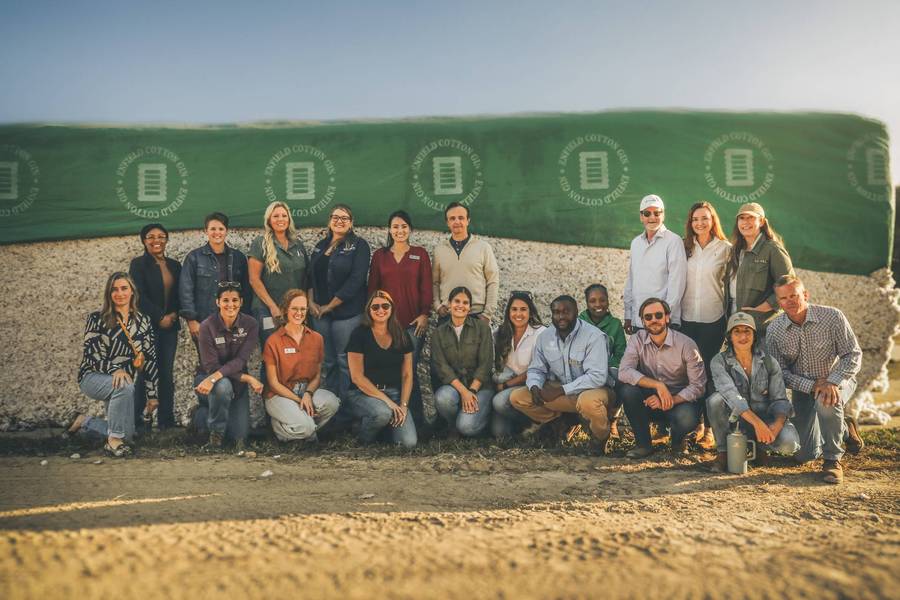
On the final day of the visit, USRCF Farmer Mentor Zeb Winslow welcomed the group to his farm, where SHI Chief Scientific Officer Dr. Cristine Morgan took them into a soil pit to show how Winslow’s management has improved his soil’s structure and composition.
“My soils look different than they did 10 years ago,” Winslow said. “There’s life in them.”
After a soil sampling demonstration from Soil Scientist Helen Boniface, the trip ended with a look toward the future, as Research Soil Scientist and Program Director Dr. Dianna Bagnall described next steps for USRCF, including developing and sharing regional fact sheets to show progress made with regenerative practices, launching a producer portal to deliver farmer reports and locally relevant information, and expanding a benchmarking approach that helps farmers understand how healthy their soils can be.
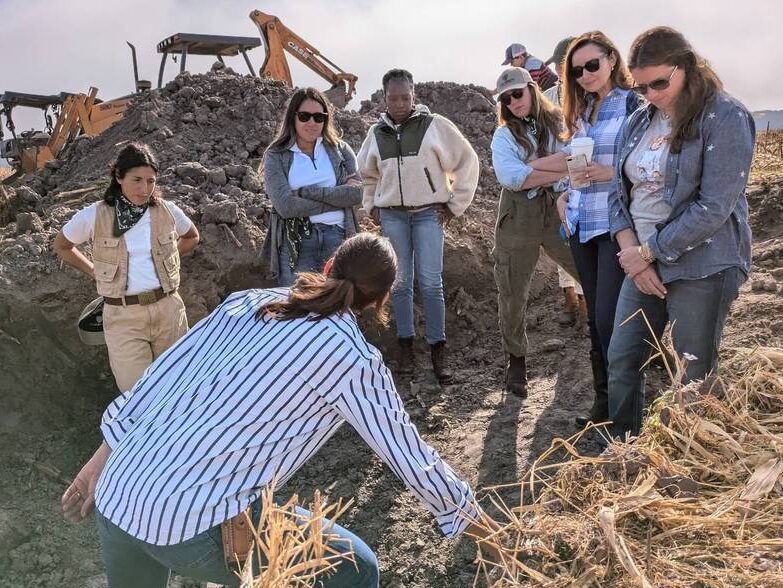
For Ralph Lauren Chief Global Impact and Communications Officer Katie Ioanilli, the visit reinforced the importance of supporting cotton growers through efforts like USRCF.
“Soil health is fundamental to so many things we care about. This has given us real perspective, and so much appreciation for farmers,” she said. “Our business doesn’t exist without the materials grown on these farms.”